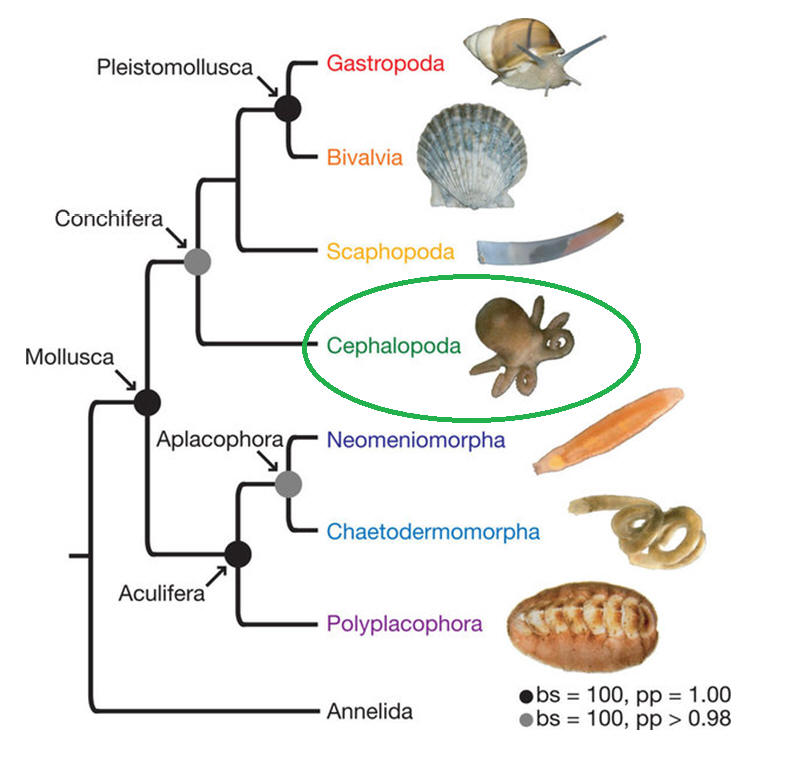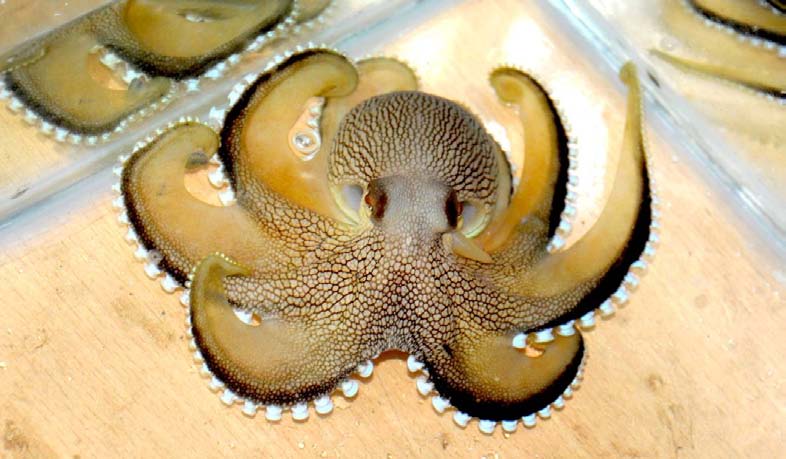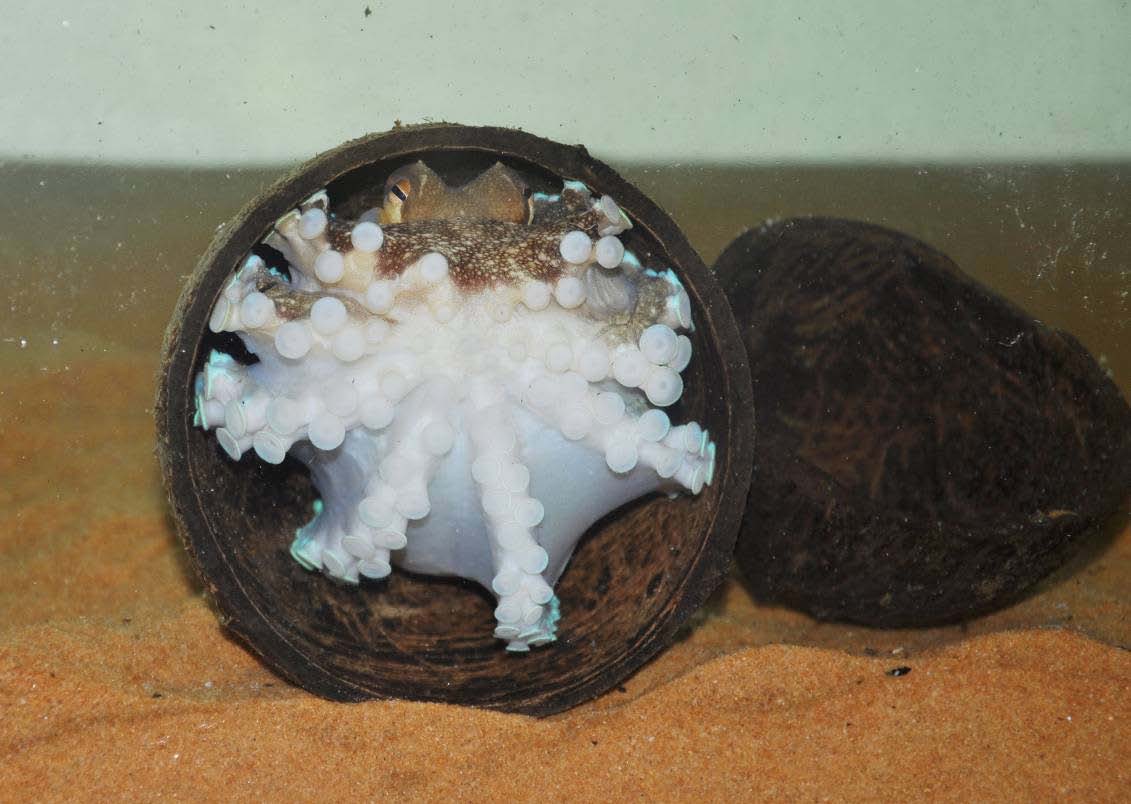Classification
Clade: Opisthokonta
Kingdom: Animalia
Phylum: Mollusca
Class: Cephalopoda
Subclass: Coleoidea
Superorder: Octopodiformes
Order: Octopoda
Suborder: Incirrata
Superfamily: Octopodoidea
Family: Octopodidae
Genus: Amphioctopus
Species: Amphioctopus marginatus
(Bouchet 2013).
In 1882 a species was scientifically classified as the Amphioctopus P. Fisher. A species derived from this parent was called the Amphioctopus marginatus and was scientifically categorized in 1964. Later the octopus was named the Veined Octopus and Coconut Octopus as its common names (Bouchet 2013).
The Coconut Octopi’s sperm cells have rear end flagella to move and they are eukaryotic, meaning they are unable to produce their own sugars. Because of these traits they are classified in the clade of Opisthokonta. In this clade there are many kingdoms, one including the Kingdom of Animalia. There are many traits putting the Coconut Octopus into the Kingdom of Animalia. Coconut Octopi are multi-cellular, undergo sexual reproduction, have specialized cells with particular functions, and show levels of organization including cell, tissue, organ, and system (Mena 2002). Under the Kingdom of Animalia, these octopi are under the Mollusca phylum. They are triploblastic, have bilateral symmetry, use their muscular foot as a form of locomotion, have a skeletal support system, have an open circulatory system including a heart and an aorta, have a nervous system, have internal gills, and have a protostome, or mouth first, digestive system possessing a gut with a mouth and an anus (Eisen). All of these traits classify the Octopus into the phylum of Mollusca. However the difference between the Mollusca Phylum and the phylum of other animalia is this phylum has a soft body which is protected by the mantle and a hard shell made up of calcium carbonate, and to grow they molt their old shell, continuously regenerating their protective shell (Eisen).

Going even deeper, the Coconut Octopus is under the Cephalopoda which is considered to be the most highly evolved class of Molluscs (Eisen). The common ancestor of the Cephalopoda Class had a shell with tissues that divided the shell into chambers so a hard, protecting tube of calcium carbonate can be on top. But it certain groups such as the Octopada Order lost this shell. Also organisms in the Cephalopoda Class have a large brain covered in a cartilaginous cranium (Eisen). Looking at the phylogenetic tree above, you can clearly see all the different classes of Mollusca and why the the octopus clearly fits into the Cephalopoda class. The order of the Coconut Octopi is Octopada meaning they have eight arms and have no shell (Wood 1995). As shown in the phylogenetic tree below, the Amphioctopus marginatus has many closely related relative that have evolved fairly recently; the Octopodiformes, the Superorder the coconut octopus is in, and the Decabrachina are in a sister taxa meaning the organsims in these taxas are closely related. Getting even more specific, the Octopodidae Family is defined as having suckers; can have teeth, and one of its arms is modified as its male reproductive organ which is the only leg that cannot detach (Wood 1995). There are many genesis of octopi in the Octopodidae Family such as the Common Octopus. To avoid any confussion, the Coconut Octopus is narrowed down even further. The genus is Amphioctopus because they have arms that are two or three times their body length and live in tropical or subtropical waters (Kaplan 2009). Finally its specific species name is Amphioctopus marginatus.

When breaking down the species name I found that the meaning of the Genus Amphioctopus in English translates to the amphibious, meaning being able to change shape, and it is an octopus (WorldNet 2013). The meaning of marginatus breaks down into living in the sea and being very careful and cautious (WorldNet 2013). The common name for this organism is the Viened Octopus and the Coconut Octopus. It is named the Veined Octopus because of the obvious visual viens throughout its body (Gonzalez 2012). Also it is called the Coconut Octopus because it can use a coconut as a protective shell against predators. For more information about the use of the coconut shell check out the form and function page.
To see where the Coconut Octopus lives visit our Habitat page or go back to our home page.

